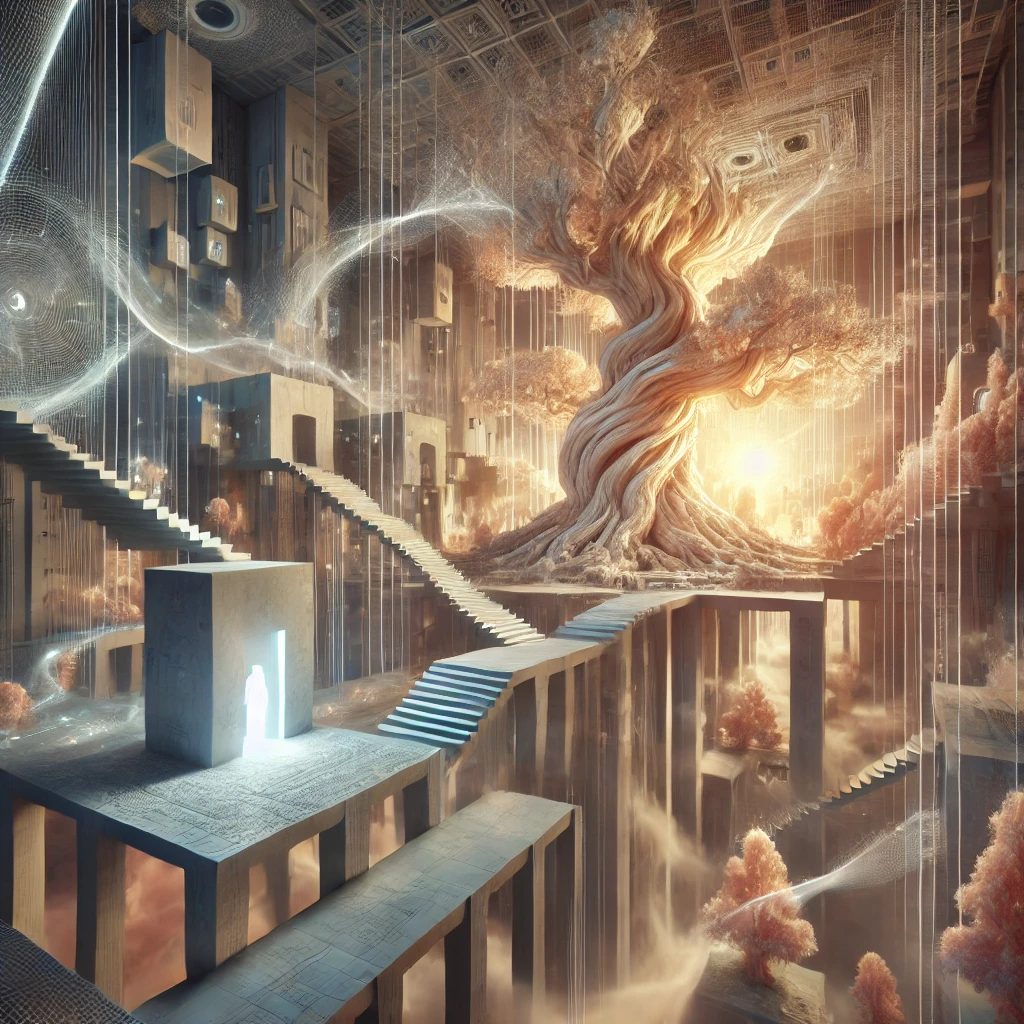The Architecture of Happiness: Between Spaces and Emotions
By Aila Boler
Imagine happiness as an architectural concept. It requires a strong foundation of self-awareness, open spaces for creativity, and windows that let in moments of joy, learning, and connection. Some people find happiness in structured environments, like a well-planned city, where predictability and security bring peace. Others thrive in organic, evolving spaces, much like a forest where spontaneity and discovery lead to fulfillment.
Just as architecture provides structure and meaning to physical spaces, it also serves as a metaphor for the way we build our inner worlds. Beyond aesthetics, happiness in architecture and life depends on how the environment supports our sense of belonging, freedom, and connection to the world around us.
Architecture is not merely a scenario where life unfolds. It is an active part of the human experience, shaping emotions, behaviours, and overall well-being. The way spaces are designed, from their layout to the choice of colours and materials, directly influences our sense of comfort, belonging, and even happiness. This connection goes beyond aesthetics and is deeply intertwined with how we engage with the world around us.
The impact of architecture on quality of life can be observed in spatial organisation. A well-planned environment, whether a home, a workplace, or a public square, enhances mental clarity and reduces stress. As argued by Russo, Argandoña, and Peatfield (2022), domestic spaces, when designed with sensitivity, directly influence both subjective and social well-being. Elements such as natural lighting, spatial fluidity, and intuitive organisation create atmospheres that foster both tranquillity and productivity.
Colour also plays a crucial role in the relationship between space and emotion. Studies by Farina, Perez, and Bastos (2006) demonstrate how different tones influence mood and behaviour. Warm shades such as deep reds and golds evoke energy and creativity, while serene blues and earthy greens promote calmness and focus. The conscious use of colour in architecture not only enhances the emotional experience of occupants but also guides sensations and promotes well-being. In The Architecture of Happiness, Alain de Botton (2014) reinforces this idea, arguing that well-considered design choices create a richer and more meaningful spatial experience.
However, happiness in architecture is not limited to aesthetics or immediate sensations. It is also closely linked to fundamental human needs such as comfort, privacy, and a connection with nature. Spaces that offer autonomy and flexibility, whether through adaptable layouts or areas of retreat, tend to strengthen well-being. De Botton (2014) suggests that when design respects human psychology, individuals develop deeper connections with their surroundings, resulting in a heightened sense of belonging and security.
The relationship between architecture and happiness is both complex and essential. From spatial design to colour theory, from spatial organisation to attention to human needs, everything influences our emotions and behaviours. The studies by Russo, Argandoña, and Peatfield (2022), Farina, Perez, and Bastos (2006), and De Botton (2014) help us understand how the built environment can actively contribute to well-being, both individually and collectively. By integrating architecture, psychology, and human behaviour, we create spaces that not only shelter but also embrace, inspire, and transform.
References:
De Botton, A. (2014). The Architecture of Happiness. London: Penguin General UK.
Farina, M., Perez, C. & Bastos, D. (2006). Psicodinâmica das cores em comunicação. São Paulo: Edgard Blucher. Available at https://archive.org/details/PsicodinmicaDasCoresEmComunicaaoModestoFarina (Accessed 4 March 2025).
Russo, M.T., Argandoña, A. & Peatfield, R. (Eds.). (2022). Happiness and Domestic Life: The Influence of the Home on Subjective and Social Well-being (1st ed.). London: Routledge. Available at https://doi.org/10.4324/9781003265702 (Accessed 4 March 2025).

Aila Boler, a Brazilian-born architect and writer, explores the relationship between sites and emotions. For her, cities are living organisms that reflect human feelings and experiences. Her writing proposes a deep connection between people and spaces, promoting the humanization of environments.
With a delicate approach, Aila captures the mediation between spaces and subjectivity, earning awards and publications. Her work can be accessed upon request.
Aila combines her passions and becomes a specialist in Marketing for the Architecture and Home Décor sectors, founding Boler Marketing and Communications, serving clients in Brazil and worldwide while living in Australia.
Learn more about Aila Boler:
Facebook * Instagram * Website * LinkedIn



 Babel Language 2025: Português Presencial com Tecnologia, Cultura e Conexão!
Babel Language 2025: Português Presencial com Tecnologia, Cultura e Conexão!
 Apresentamos nosso Colunista de 2025: Daniel Stachofsky!
Apresentamos nosso Colunista de 2025: Daniel Stachofsky!